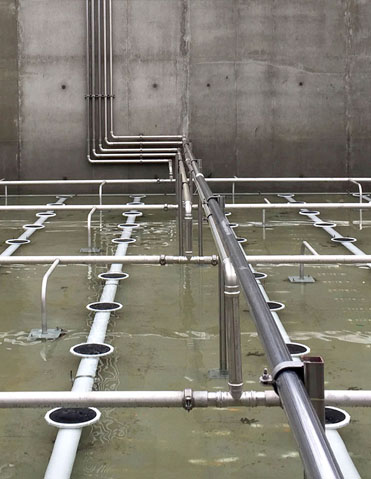EnviroMix Adds New Features to Aerobic Digestion Product Offering

Introduced to the wastewater treatment market in 2014, EnviroMix’s BioCycle-D Optimized Aerobic Digestion Process represented a paradigm shift from the conventional approach to aerobic digestion. The company recently publicized several new features that enhance the already robust product’s capabilities.
Biosolids management costs for a small to medium-sized wastewater treatment facility can account for 50% of the facility’s operations and maintenance expenses. The conventional approach to aerobic digestion involves using constant aeration to both provide mixing of the digester’s contents and meet the oxygen demand, resulting in an exorbitant amount of energy use and providing little to no process control. Upgrading the aerobic digestion process to BioCycle-D can save a facility both time and money, while ensuring process performance to meet disposal requirements.
Delivering 50% or greater energy savings, BioCycle-D provides optimal conditions for aerobic sludge digestion and volatile solids destruction at a fraction of the operating expense of a conventional aerobic digestion process. Recently added features include:
- An operator selectable sludge processing mode that ensures tank contents are homogenous for downstream processing and maintains phosphorus in the sludge through low oxic states.
- An operator selectable supernatant return mode that includes an automated settle and decant phase. This mode allows the sludge to thicken, eliminates the return of nutrients to the head of the secondary treatment process, and reduces the need for costly chemicals.
- Fully updated operator interface terminal (OIT) graphics that support an intuitive, seamless user experience.
By decoupling aeration from mixing, BioCycle-D operates on the principle of alternating aerobic and anoxic conditions to optimize digestion and save energy. Through instrumentation feedback, the BioCycle-D controller automatically transitions the cycles from aerobic for volatile solids destruction to anoxic/anaerobic for facilitating denitrification, alkalinity recovery, and energy savings. Aerobic–anoxic cycling ruptures cell walls, resulting in better dewaterability of the sludge and greater volatile solids destruction.
Learn more about the process optimization, energy efficiency, straightforward operation, and unparalleled flexibility BioCycle-D Optimized Aerobic Digestion Process provides.


